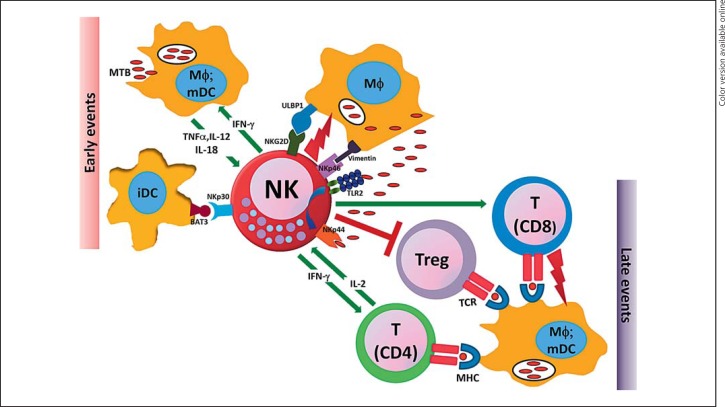Fig. 2.
Possible role of NK cells in the early and late events of MTB infection. During the early stages of MTB infection in the lung, NK cells are activated by proinflammatory cytokines released by infected macrophages or DC and provide an early source of IFN-γ and other macrophage-activating soluble factors. NK cells also lyse iDC or alveolar macrophages (MΦ) through the recognition of stress-induced cellular ligands (BAT3, ULBP1 and vimentin) by NK cell-activating receptors (NKp30, NKG2D and NKp46). Bacteria released by infected cells may directly interact with NK cell receptors such as TLR2 and NKp44, undergoing a two-step process that eventually maintains and prolongs cell activation. Later on, IFN-γ and other cytokines released by activated NK cells may contribute to the phase of T cell priming by shaping the subsequent T cell response towards a Th1 phenotype. Once T cells have been recruited at the infection site and become activated following antigen recognition, NK cells may undergo a bidirectional interaction with them, by being activated by IL-2 released from activated T cells and playing an immunoregulatory role in other T cell activities.

